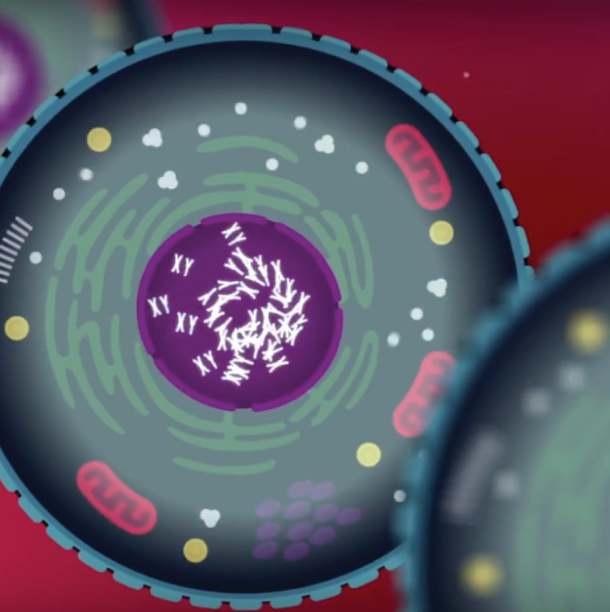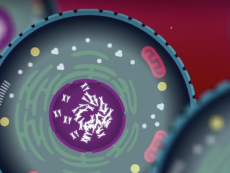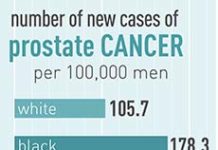September 17, 2018, by Norman E. Sharpless, M.D.

NCI and FDA are sponsoring a challenge to spur the development of methods that use proteomic and other “omics” data to accurately detect and correct mislabeled tumor and tissue samples.
Credit: National Cancer Institute
I am a big believer in strategic partnerships as a key step toward making advances against cancer. That’s one of the reasons why I am particularly excited about NCI’s latest collaborative effort with the Food and Drug Administration (FDA): the Multi-omics Enabled Sample Mislabeling and Correction Challenge.
This challenge is launched in coordination with DREAM Challenges, a community of researchers from a variety of organizations who crowdsource solutions to fundamental biomedical questions. This challenge invites participants to propose solutions that address a serious and long-standing problem in the analysis of human samples: namely, the mislabeling of tissue samples caused by human error.
In the research setting, sample mislabeling can result in irreproducible study findings or invalid study conclusions. In the clinic, it can lead to patients potentially getting the wrong treatments, which could have severe consequences. Mislabeling errors are becoming more prevalent because large-scale studies of the molecular characteristics that drive cancers, which rely on tumor and tissue samples, are highly complex and have multiple points during which mislabeling errors can occur.
The goal of the challenge, which launches at the end of September, is to encourage the development of innovative algorithmic solutions that rely on “-omics” (for example, genomic and proteomic) datasets to accurately detect and correct mislabeled samples. (More information on the challenge is available in this commentary published September 7 in Nature Medicine).
This challenge, just the most recent example of FDA and NCI’s long history of successful collaborations, demonstrates how government agencies with shared concerns can leverage expertise and resources to expedite progress and benefit patients.
Our agencies are continuing that tradition of strong and strategic partnerships, expanding these into the research and regulatory realms with the goal of spurring more rapid progress. I’d like to share a few more examples of successful FDA–NCI collaborations that show the tangible benefits of working together in diverse areas.
Partnering on Workforce Training and Development
Building a competitive, diverse, and innovative research workforce for the decades ahead is one of NCI’s most important responsibilities. NCI and FDA have long recognized that progress requires investing in a sustainable pipeline of highly qualified scientists who understand research, medicine, and the regulatory process.
Over the past dozen years, FDA and NCI have participated in a joint initiative called the Interagency Oncology Task Force (IOTF) fellowship program.
The goal of the IOTF program, which also includes NIH and HHS as partners, is to develop a cadre of scientists with a skill set that bridges research and regulatory science.
IOTF fellows gain expertise in the regulatory requirements for developing new cancer therapies and related devices so that they can properly evaluate their efficacy, safety, quality, and performance. They also learn strategies to improve planning for the various steps throughout the research and regulatory review process, which covers rules concerned with the development, testing, approval, manufacturing, quality control, and marketing of drugs and devices.
The fellows emerge from the IOTF program equipped with the skills to more quickly and efficiently move new drugs and devices from the bench to the bedside.
Since the launch of IOTF in 2005, the program has supported 55 fellows, all of whom went on to jobs at FDA, NIH, or industry. Of the 37 fellows who went to FDA, 15 are now in leadership roles.
Collaborating to Modernize Assessment of Safety and Tolerability of Treatments

NCI Director Dr. Norman E. Sharpless
Credit: National Institutes of Health
As any oncologist can tell you, treatment-related side effects not only can harm patients’ quality of life, but they can also keep patients from completing their treatment. We owe it to patients to do a better job of understanding how new therapies affect the quality of their life beyond measures of tumor size or how long they live without their tumors growing.
For years, clinicians and investigators have used the Common Terminology Criteria for Adverse Events (CTCAE) to help document their assessments of how patients in clinical trials are tolerating therapy. To better capture the patient perspective, NCI developed the complementary Patient Reported Outcomes (PRO) version of the CTCAE (PRO-CTCAE). NCI and FDA’s Oncology Center of Excellence (OCE) are participating in working groups to further explore the use of PRO-CTCAE in cancer drug development.
Building on this work, NCI and the FDA are also investigating the development of tools that objectively measure clinical outcomes such as pain, cognitive function, quality of life, and other indicators of patients’ tolerability of therapy. Recently developed tools include biometric sensors and computer vision and voice recognition technologies. Such tools are able to capture the experience of all patients, not just those who are able to respond to questionnaires, and will ultimately provide a more comprehensive picture of the side effects of cancer treatments.
Accelerating Childhood Cancer Drug Development
In August 2017, Congress passed the FDA Reauthorization Act (FDARA), which included several provisions from a previously introduced bill known as the Research to Accelerate Cures and Equity (RACE) for Children Act.
These provisions, which were incorporated into FDARA as Section 504, Development of drugs and biological products for pediatric cancers, amend current requirements for pediatric studies so that they are based on relevant molecular targets rather than cancer site of origin. NCI collaborates with FDA to implement Section 504.
Prior to this law going into effect, investigators would be required to develop pediatric study plans for a therapy only if it was indicated for the same type of cancer that the drug was being evaluated for in adults. However, as NCI-supported research has shown, some molecular targets are shared between these cancers and pediatric cancers. Going forward, Section 504 mandates that shared molecular targets will drive the development of study plans, rather than cancer type.
FDARA requires FDA, in consultation with NCI, to develop and maintain a list of relevant molecular targets to inform the development and review of pediatric study plans. To meet this requirement, FDA’s OCE and NCI convened public meetings of the childhood cancer community to help develop the list of molecular targets. NCI also issued a Request for Information to collect additional input on potential molecular targets.
FDA published the list of targets last month, and NCI will continue to collaborate with FDA to keep the list up-to-date. Additionally, several NCI programs, including the Pediatric Early Phase Clinical Trials Network and Pediatric Preclinical Testing Consortium, continue to conduct research that will inform the list of molecular targets.
Working Hand in Hand to Reduce Tobacco Use
Smoking rates in the United States have dropped substantially over the past several decades, thanks to the implementation of policies and programs—many of which are based on NCI-supported research—at the local, state, and federal levels. But, with nearly 40 million Americans still smoking cigarettes, tobacco use is an ongoing challenge. Public health agencies must do more.
Both NCI and FDA’s Center for Tobacco Products have long been committed to reducing tobacco use in the United States and globally, and tobacco use reduction is an area of close collaboration.
NCI has funded innovative research on the interplay between nicotine content and smoking behavior since the 1980s and has built a robust scientific evidence base to help better understand how modifying nicotine content in cigarettes could impact smoking behavior. This research provided part of the scientific foundation for FDA’s estimate that reducing nicotine in cigarettes to nonaddictive or minimally addictive levels could potentially decrease the smoking rate from 15% to 1.4% of adults. In addition, current smokers could more easily quit and millions of youth would never start smoking.
Based on these estimates, last year, FDA Commissioner Scott Gottlieb announced FDA’s intent to pursue regulatory action to reduce nicotine in cigarettes to nonaddictive or minimally addictive levels.
Tackling the problem of tobacco use also means we must consider the factors that contribute to its use, including the proliferation of new tobacco products such as e-cigarettes, which are now the most commonly used tobacco product among middle and high school students. Moreover, studies have suggested that teens who use e-cigarettes are more likely to go on to smoke conventional cigarettes.
In response to these findings, FDA has made new efforts to prevent tobacco product use among teens, including the launch last year of a Youth Tobacco Prevention Plan that includes an emphasis on e-cigarettes. Research supported by NCI’s Tobacco Control Research Branch has provided and will continue to provide an evidence base for FDA’s activities in this area.
Many Opportunities Ahead
I’ve highlighted just a few areas in which FDA and NCI are currently collaborating, but our shared concerns on a number of public health issues open up many opportunities on which we can and do work together.
I’ve always believed that a multipronged, multidisciplinary team approach is the best way to accelerate progress in public health, and I think our collaborations have demonstrated that. I plan to have ongoing discussions with FDA about other partnerships and cultivating more opportunities to advance cancer research and care.







